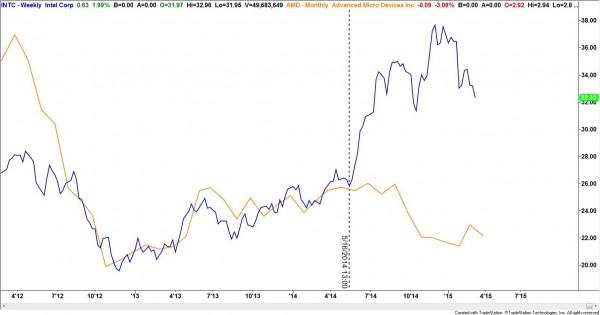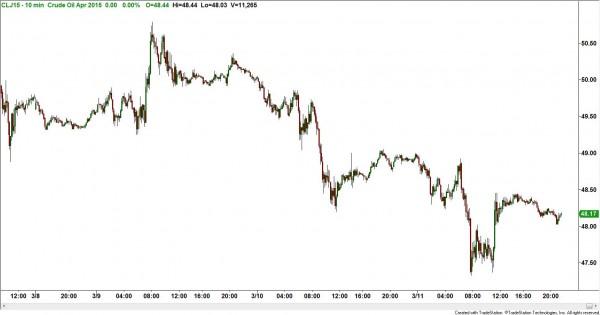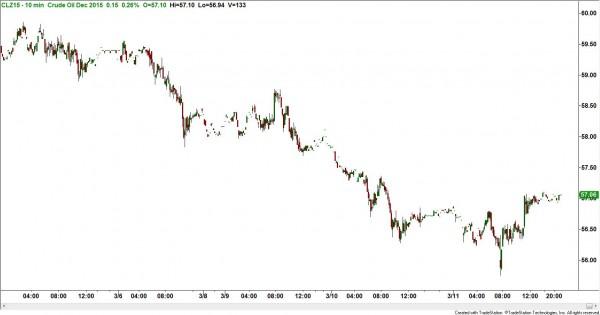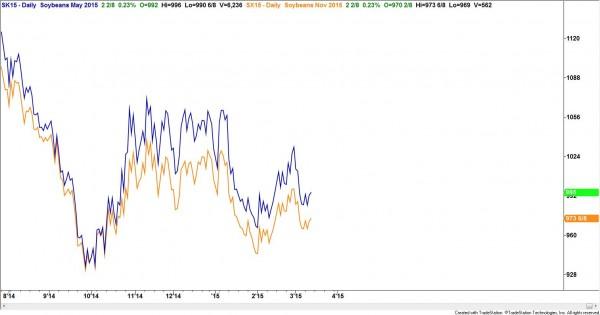When it comes to trading, most of it is done by making a directional bet. In other words, if the probabilities are high that the market will decline, we short it anticipating we will make money as it moves lower. Conversely, when the prevailing odds are that a given market will move higher, we buy it with the hope that we will sell at higher prices in order to garner a profit. In addition, to exercise sound risk management we will cut our losses swiftly if the market proves us wrong. This is conventional market speculation.
There is however, a lower risk method to participate in the markets. This method is not as widely known, or practiced for that matter, but can be a viable method to making money in any market. What I’m referring to is what is commonly called spread trading. Spread trading involves buying one contract and concurrently selling another contract in order to profit from a relative change in price in both contracts.
These can be done in the same market, known as Intra-market spreads, and they can also be done among two related markets, referred to as an Inter-market spread. Institutions are heavily involved in this type of trading in stocks, options, and the futures markets. One premise in spread trading is that a situation arise when markets become misaligned or are trading outside of the norm. Most of the time they will almost always revert back to alignment. This price movement between two markets can produce profits for the astute spread trader.
The second premise in spread trading is to look at several related markets and then identify the strongest and weakest of those markets. The stronger market is to be bought and the weaker market should be shorted, assuming that strength begets strength and weakness begets weakness. The best example of this type of spread is to look at two competing companies, identify which one is the strongest and weakest competitor in the given space and apply this technique. Specifically, if you think about the chip maker AMD competing against Intel. The most obvious spread in this scenario is to buy shares of Intel, since they are the market leader, while simultaneously shorting shares of AMD. As we can see from the chart below (the orange line representing the closing price of AMD versus the blue line plotting shares of Intel) a trader in this particular pairs (spread) trade would have done very well.
Although this is not a futures example I’m showing it to convey the point of this strategy.
As I mentioned earlier, some futures contracts go out of alignment. So what does this mean specifically? Let’s take interest rates for instance. We know that in a normal yield curve interest rates in the shortest maturities are lower than longer maturities. For instance, the yield on a 3 month T-Bill is only a few basis points whereas the yield on a thirty year bond is about 2.6 %. In most commodities today’s price is usually lower than the price in the future. Below are two charts; one is displaying the April of 2015 Crude oil contract and the other is the December of 2015 contract. Notice the price on the April contract is $48.17 and the December is $57.06. Oil is in Contango, which is normal.
A spread trader can sell the December and buy the April if he feels that the price differential will shrink.
There are instances, however, where the front months are more expensive than the further out months. This phenomenon is called backwardation. Below we see this between the May (blue line ) and November (orange line ) Soy bean contracts.
This distortion in price, if corrected, can represent opportunity for the spread trader.
Spread trading, in addition to having less risk than buying or selling the outright contracts, comes with an additional benefit,which is much lower margin requirements.
The bottom line is that spread trading is not for everyone. Yes, there’s less risk but also there’s less potential reward. So, some food for thought, explore it and see if it’s for you.
Note: All information on this page is subject to change. The use of this website constitutes acceptance of our user agreement. Please read our privacy policy and legal disclaimer. Opinions expressed at FXstreet.com are those of the individual authors and do not necessarily represent the opinion of FXstreet.com or its management. Risk Disclosure: Trading foreign exchange on margin carries a high level of risk, and may not be suitable for all investors. The high degree of leverage can work against you as well as for you. Before deciding to invest in foreign exchange you should carefully consider your investment objectives, level of experience, and risk appetite. The possibility exists that you could sustain a loss of some or all of your initial investment and therefore you should not invest money that you cannot afford to lose. You should be aware of all the risks associated with foreign exchange trading, and seek advice from an independent financial advisor if you have any doubts.
Editors’ Picks
EUR/USD edges lower toward 1.0700 post-US PCE

EUR/USD stays under modest bearish pressure but manages to hold above 1.0700 in the American session on Friday. The US Dollar (USD) gathers strength against its rivals after the stronger-than-forecast PCE inflation data, not allowing the pair to gain traction.
GBP/USD retreats to 1.2500 on renewed USD strength

GBP/USD lost its traction and turned negative on the day near 1.2500. Following the stronger-than-expected PCE inflation readings from the US, the USD stays resilient and makes it difficult for the pair to gather recovery momentum.
Gold struggles to hold above $2,350 following US inflation

Gold turned south and declined toward $2,340, erasing a large portion of its daily gains, as the USD benefited from PCE inflation data. The benchmark 10-year US yield, however, stays in negative territory and helps XAU/USD limit its losses.
Bitcoin Weekly Forecast: BTC’s next breakout could propel it to $80,000 Premium

Bitcoin’s recent price consolidation could be nearing its end as technical indicators and on-chain metrics suggest a potential upward breakout. However, this move would not be straightforward and could punish impatient investors.
Week ahead – Hawkish risk as Fed and NFP on tap, Eurozone data eyed too

Fed meets on Wednesday as US inflation stays elevated. Will Friday’s jobs report bring relief or more angst for the markets? Eurozone flash GDP and CPI numbers in focus for the Euro.
RECOMMENDED LESSONS
Making money in forex is easy if you know how the bankers trade!
Discover how to make money in forex is easy if you know how the bankers trade!
5 Forex News Events You Need To Know
In the fast moving world of currency markets, it is extremely important for new traders to know the list of important forex news...
Top 10 Chart Patterns Every Trader Should Know
Chart patterns are one of the most effective trading tools for a trader. They are pure price-action, and form on the basis of underlying buying and...
7 Ways to Avoid Forex Scams
The forex industry is recently seeing more and more scams. Here are 7 ways to avoid losing your money in such scams: Forex scams are becoming frequent. Michael Greenberg reports on luxurious expenses, including a submarine bought from the money taken from forex traders. Here’s another report of a forex fraud. So, how can we avoid falling in such forex scams?
What Are the 10 Fatal Mistakes Traders Make
Trading is exciting. Trading is hard. Trading is extremely hard. Some say that it takes more than 10,000 hours to master. Others believe that trading is the way to quick riches. They might be both wrong. What is important to know that no matter how experienced you are, mistakes will be part of the trading process.




